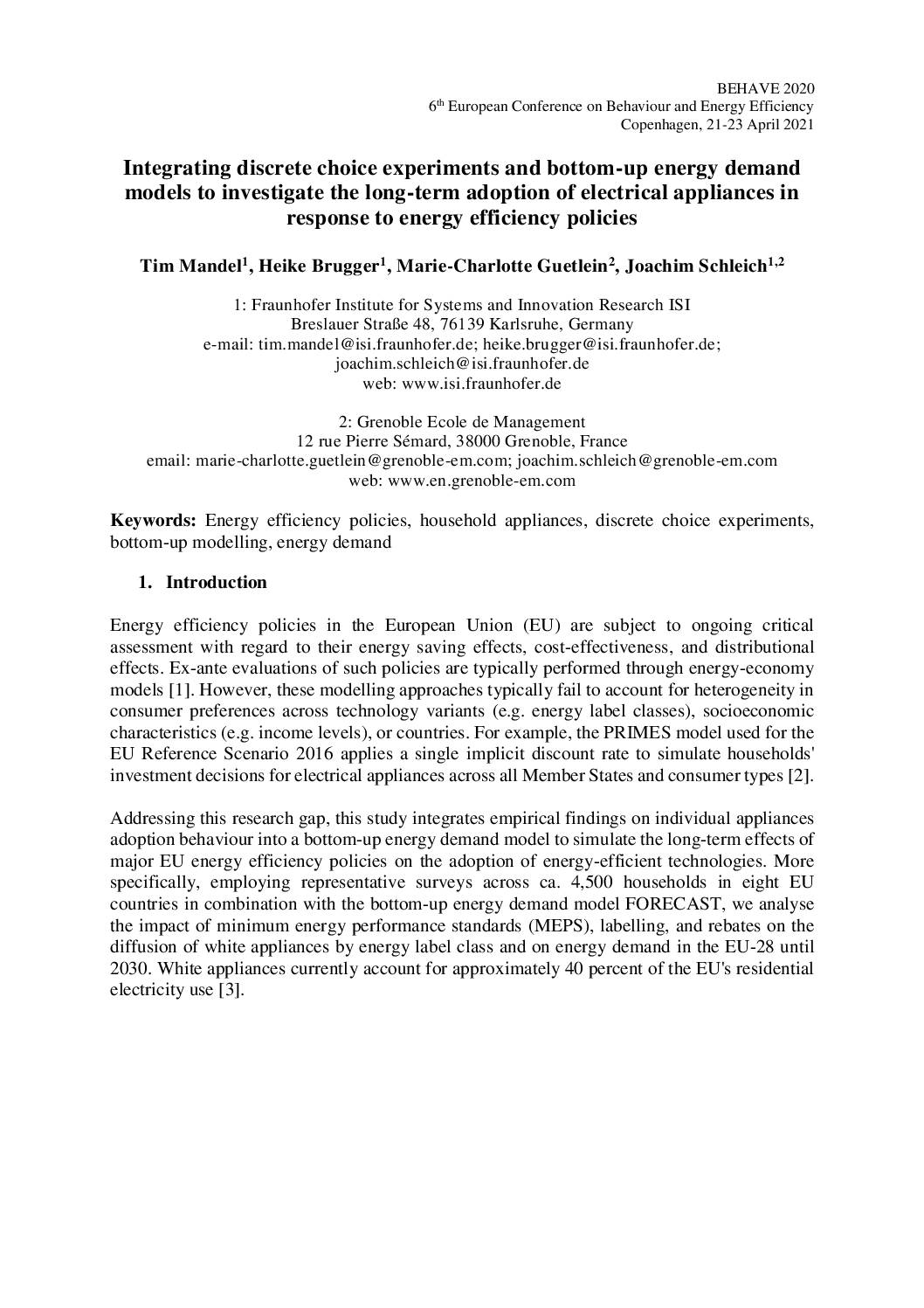Energy efficiency policies in the European Union (EU) are subject to ongoing critical assessment with regard to their energy saving effects, cost-effectiveness, and distributional effects. Ex-ante evaluations of such policies are typically performed through energy-economy models. However, these modelling approaches typically fail to account for heterogeneity in consumer preferences across technology variants (e.g. energy label classes), socioeconomic characteristics (e.g. income levels), or countries. For example, the PRIMES model used for the EU Reference Scenario 2016 applies a single implicit discount rate to simulate households’ investment decisions for electrical appliances across all Member States and consumer types.
Addressing this research gap, this study integrates empirical findings on individual appliances adoption behaviour into a bottom-up energy demand model to simulate the long-term effects of major EU energy efficiency policies on the adoption of energy-efficient technologies. More specifically, employing representative surveys across ca. 4,500 households in eight EU countries in combination with the bottom-up energy demand model FORECAST, we analyse the impact of minimum energy performance standards (MEPS), labelling, and rebates on the diffusion of white appliances by energy label class and on energy demand in the EU-28 until 2030. White appliances currently account for approximately 40 percent of the EU’s residential electricity use.
Download sourceShare this

Sector: Power sector
Country / Region: Europe
Tags: assessments, cost effectiveness, cost effectiveness in industry, energy, energy demand, energy input labelings, minimum energy performance standards, performance standards, program evaluations, tax rebatesIn 1 user collection: Session 5a: Behaviour integration into energy modelling for policy development – 2
Knowledge Object: Publication / Report
Publishing year: 2020
Author: Tim Mandel, Heike Brugger, Marie-Charlotte Guetlein, Joachim Schleich
Content:
